
Boiling water taps are one of the most convenient fittings you’ll ever install in your kitchen, offering instant access to hot water at the turn of a handle. You may think you’re perfectly happy with your kettle, but we’ve never yet met an owner of a boiling water tap who regrets his or her life choices!
‘The primary benefit is convenience. Once you become accustomed to dispensing steaming water for tea, coffee and cooking instantly, you’ll find you become very impatient when asked to use a kettle!’ says Tom Burke, product development manager at House of Rohl. ‘With an instant hot tap, you only use the water you need. Unless you carefully measure the water you boil in a kettle, there is a natural tendency to overfill it, which is wasteful of water and energy.’
But how do the best boiling water taps deliver boiling water on demand (without breaking the bank), and is every model built in the same way? Here’s an inside look at how boiling water taps work and why it’s definitely worth considering one for your home.
How do you use a boiling water tap?
Operation varies between models, but most boiling water taps require a two-step process to dispense boiling water, such as pressing and turning a lever simultaneously, or holding a button down.
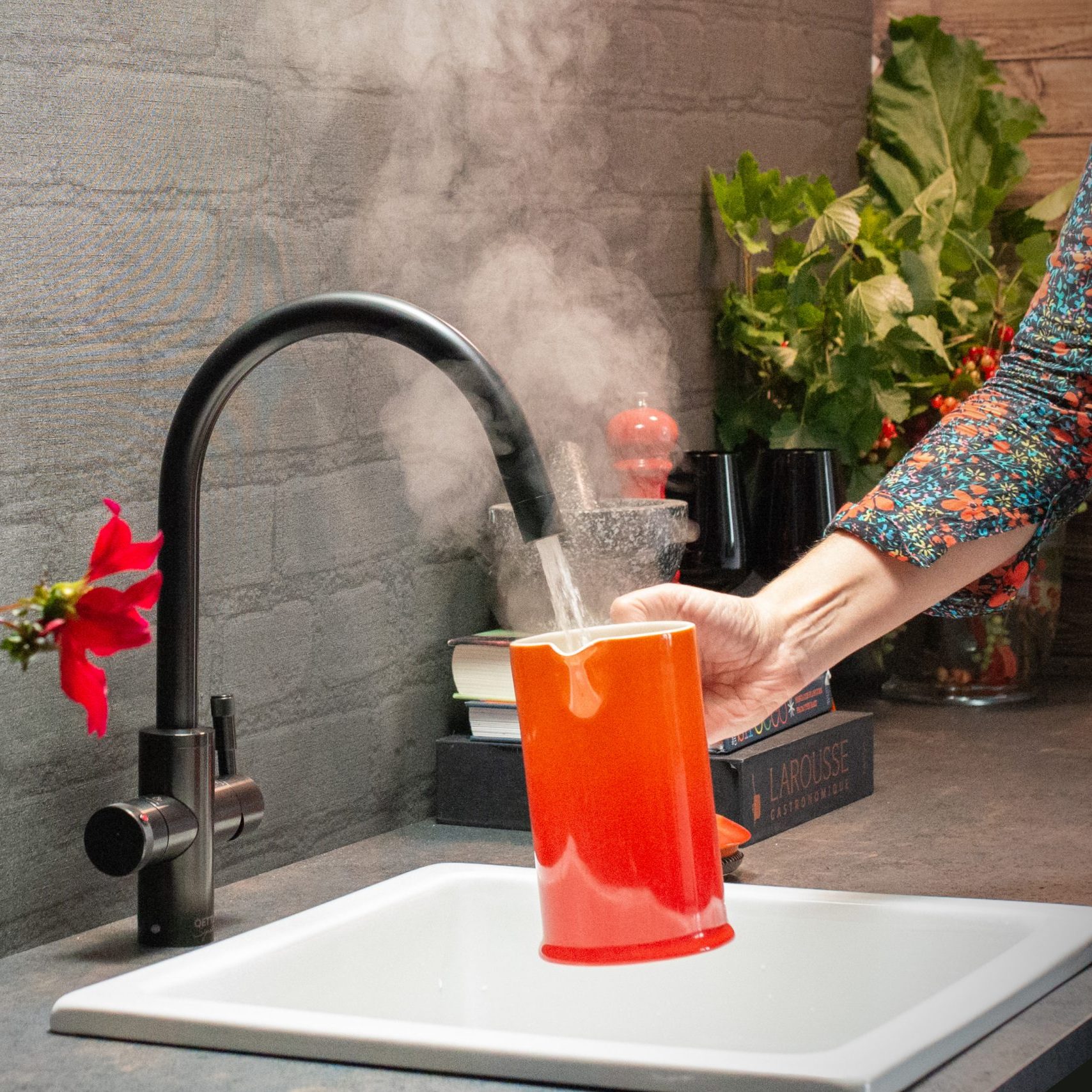
With any boiling water comes steam and this can lead to a degree of splattering and spitting, especially when the boiling water first pours out. It can be quite alarming if you’re new to boiling water taps. However, it’s very unlikely you will be scalded and there is a technique to avoid getting splashed at all. In short, don’t pour the water into your mug from a distance, like you might when pouring from a kettle, instead get the tap spout as close to the source as possible.
‘Hold your receptacle – be it a mug, teapot or saucepan – right up to the spout before you turn the tap on. For example, if you are making a mug of tea, aim to get the end of the spout inside the mug before you activate the tap; then you simply move the mug down as it fills,’ explains Alexandra Rowe, director of Qettle. ‘Any stray splashes will be safely contained within your mug, and nowhere near your skin.’ This video demonstrates the technique.
I taught my 12-year-old how to safely use our boiling water tap and she has never been harmed but if you are still concerned about steam, you may be better suited to a near-boiling water tap, which produces less steam upon initial delivery.
What are the basic features of a boiling water tap?
The main feature of boiling water taps is to provide instant boiling or near-boiling water, typically around 96°c to 100°c, from the spout. At a basic level, there will be an under-sink insulated tank that heats and stores water and a safety mechanism on the tap itself to help prevent accidental scalding. This is generally some form of push-turn action that small children won’t be able to master accidentally.
Most boiling water taps will have a built-in filter to help protect the boiler from water deposits and filter the water for improved taste. A standard boiling water tap will deliver boiling and regular cold water. A three-in-one boiling water tap that’s designed to replace your main kitchen tap, will offer boiling water, alongside regular hot and cold.
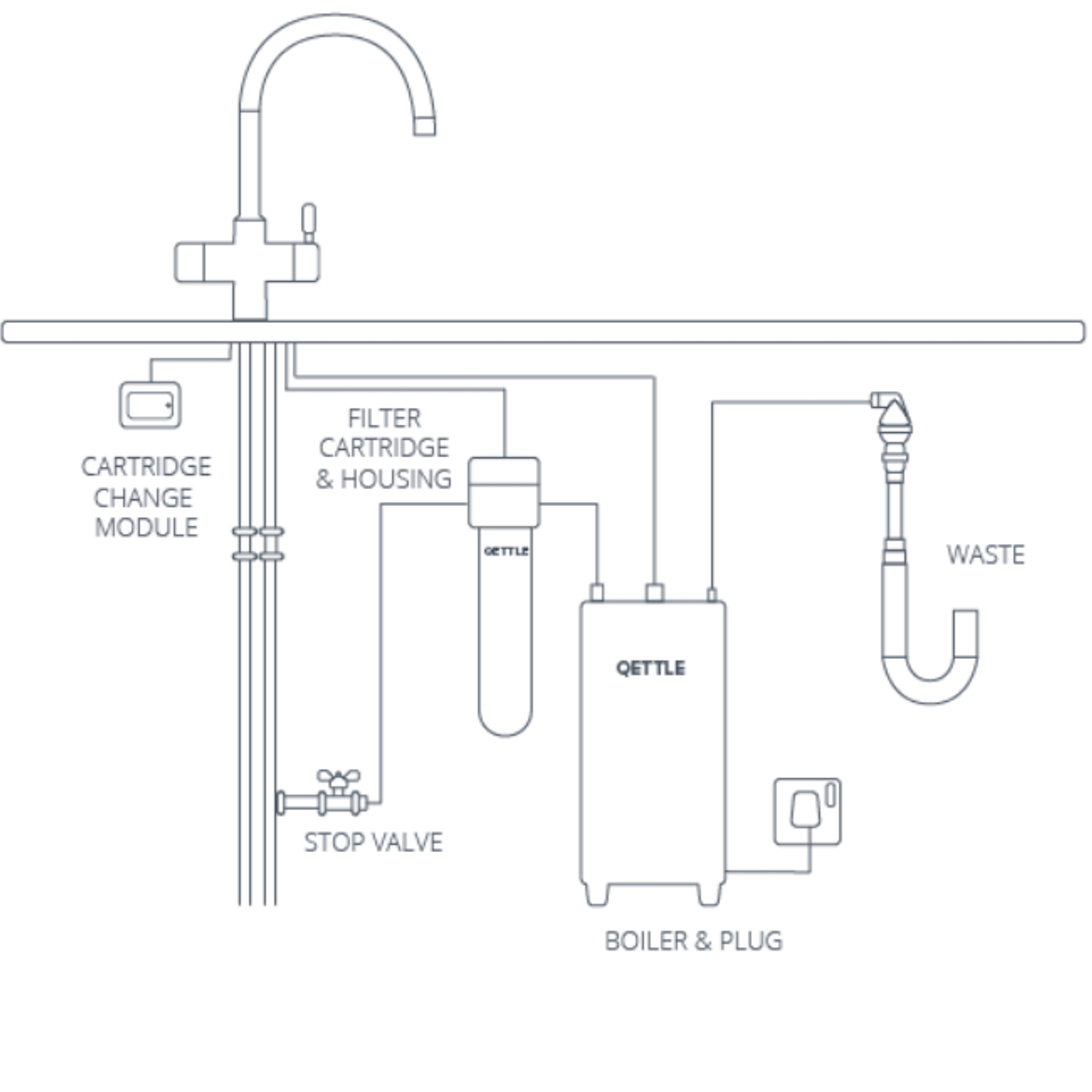
How does a boiling water tap heat up water?
A boiling water tap heats up water via a compact under-sink boiler tank, which is fed from your home’s mains cold water supply. An electric heating element inside the tank heats the water, rather like a large kettle, and the heavily insulated tank keeps it hot until required. To maintain safety and efficiency, many tanks use advanced heating elements and thermostats, preventing unnecessary energy usage while keeping water ready on demand. When the tap is turned on, the hot water is drawn directly from the heated tank, so there’s no need to wait for water to boil.
‘While the water is flowing out of the tap, fresh water immediately flows into the tank, replacing the exact amount extracted ready for the next use,’ adds Stephen Johnson, managing director, Quooker UK.
It is possible for your boiling water tap to run out of hot water, but you can reduce the chances of this happening by choosing the tank size that best suits your usage. For example, a 2.4 litre tank will dispense 5-6 cups of boiling water in one go and can reheat in four minutes. If you have a large family or regularly host coffee mornings, perhaps look for a bigger unit. A seven-litre tank will deliver around 14 cups at once.
Only calculate how many you’ll make at one time; if you drink 14 cups at intervals through the day, you won’t need such a large tank.
Do all boiling water taps work the same way?
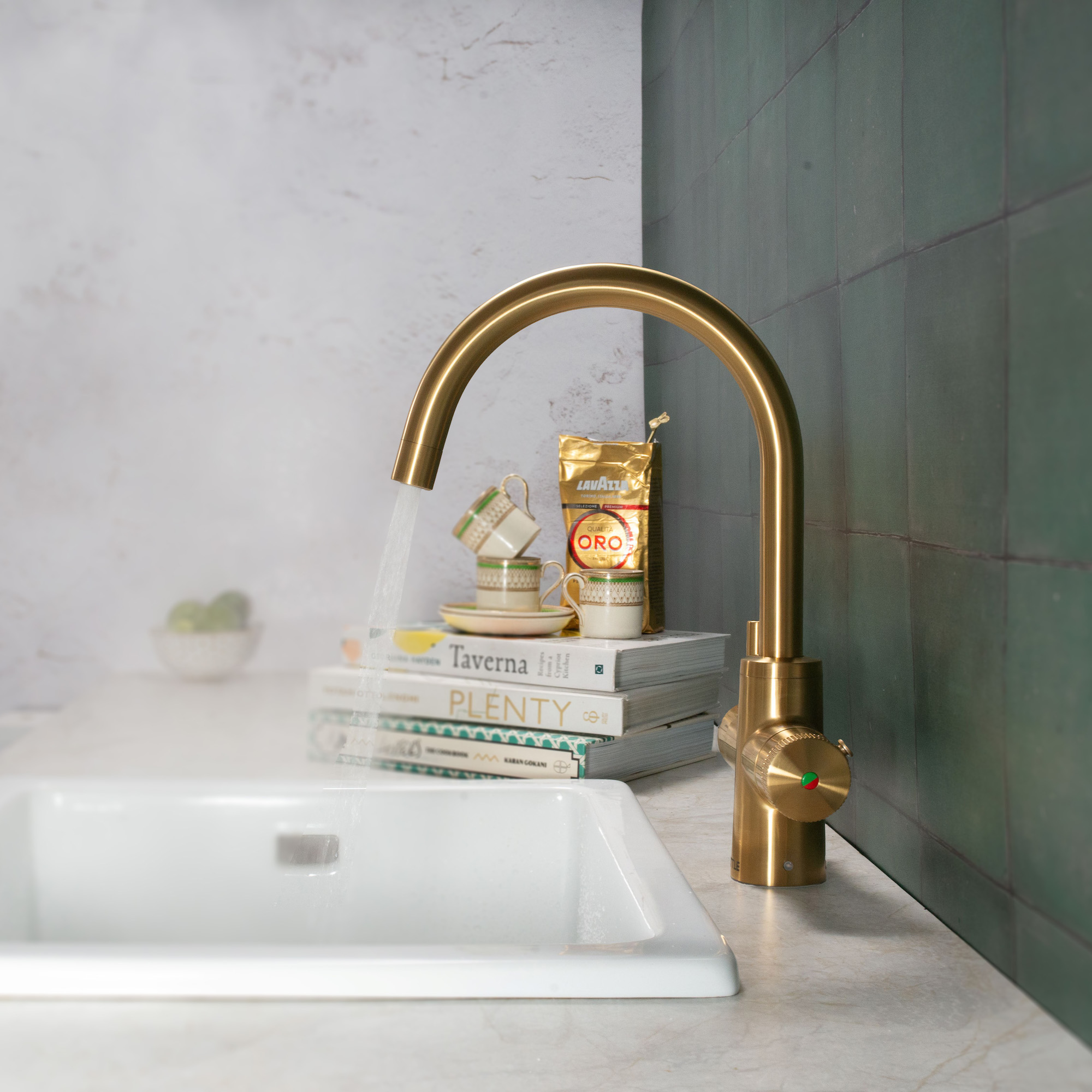
‘Whilst the general mechanism of heating and delivering boiling water is similar across brands, different manufacturers implement unique technologies and safety features to enhance usability and energy efficiency,’ says Stephen. For example, Quooker’s tank insulation offers excellent energy efficiency, while Qettle’s boiling water taps can be used with an additional safety clip on top of the usual push-and-turn for extra peace of mind.
It’s worth noting that not all models provide 100°c boiling water, which isn’t necessarily a problem – some find boiling water makes herbal tea taste bitter, for example. But do check the small print before buying to avoid disappointment, especially if you’re looking for a tap that can sterilise.
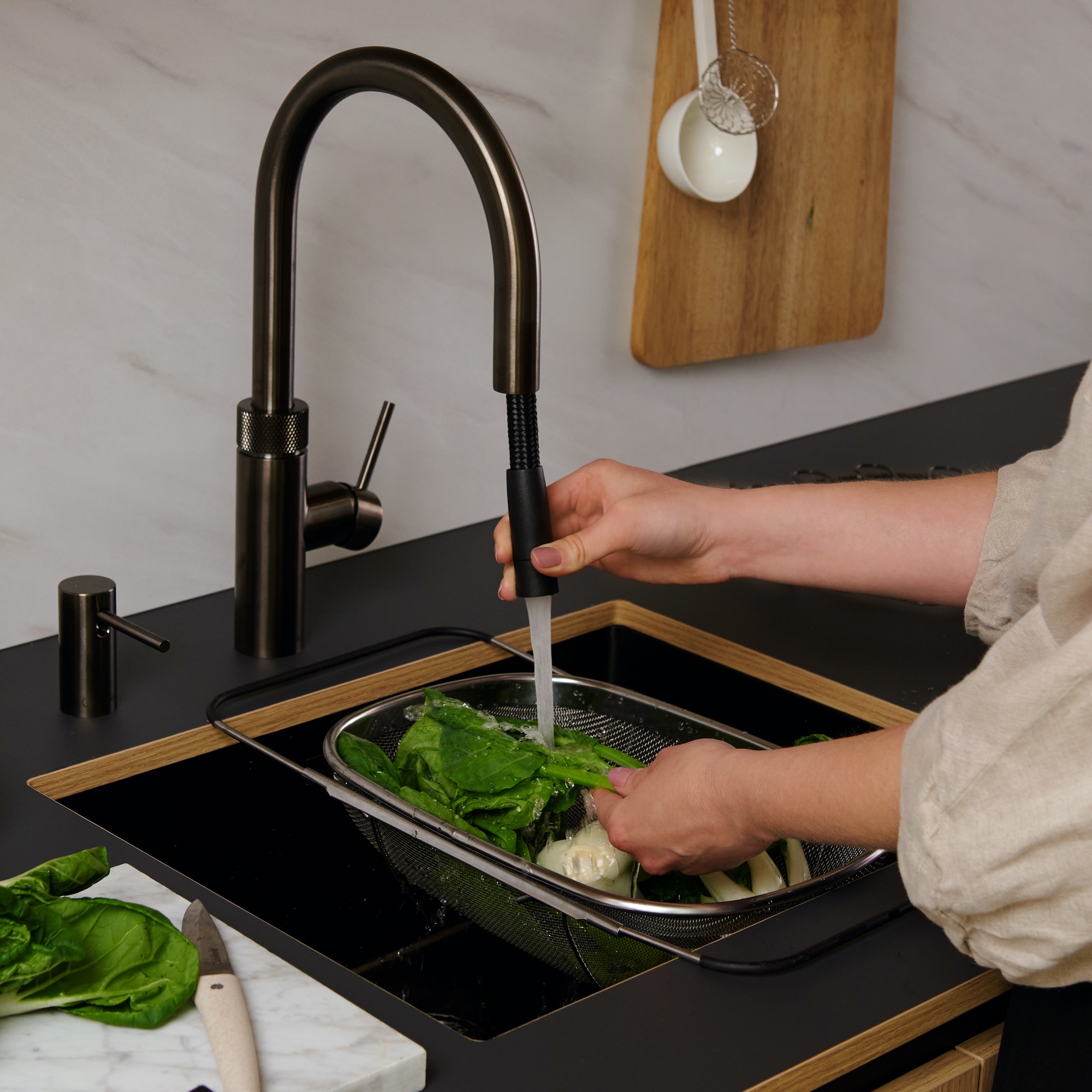
Additional boiling water tap features to consider
As the boiling water tap market matures, new features and innovations are launched. Some might be surplus to your requirements, while others can prove total game changers. Here are a few highlights to look out for when buying a new boiling water tap.
- Chilled still and sparkling water If you regularly buy bottled water, a boiling water tap that also delivers chilled filtered water and/or sparkling water could save you money in the long-term. They usually require an extra tank that is installed under the sink, so make sure you have sufficient space.
- Insulated spout This feature helps keep the spout surface cool to the touch, preventing burns or accidental scalding when dispensing boiling water.
- Advanced filters While most boiling water taps will have some form of filter unit, some offer advanced filtration and as well as specialist filter systems for those living in hard water areas. If limescale is an issue, they’re worth having as it will prolong the life of the boiler. Filter replacement is usually recommended every three-six months – do check the cost of replacement filters as prices vary
- Temperature control Some models allow you to set precise water temperatures, which makes them more flexible for making drinks, cooking, or sterilizing. Look at how easy it is to adjust the temperature – often the controls are on the tank unit, which means the tank needs to be readily accessible.
- LED Indicators Integrated LED lights that change colour according to the water temperature being delivered provide visual clarity and a cool, futuristic look. Some also use LEDs to indicate the filter needs changing
- Touch sensor controls Some boiling water taps feature touch-sensitive operation, making them sleek and more hygienic to use. For safety, boiling water delivery will usually require a longer touch to unlock
- Pull out spray Clearly it wouldn’t be wise to dispense boiling water through a pull-out spray hose. But if you want a multifunction tap at your main kitchen sink, this feature will be handy for rinsing vegetables and cleaning the sink with the regular hot and cold supply.
How do boiling water taps stay safe?
Safety features do vary, and this is something worth investigating more closely if you have small children with inquisitive minds or other family members with safe-guarding needs at home. The most common safety feature is the requirement of a two-step process, such as pressing and turning a lever simultaneously, to access boiling water. ‘This is designed to ensure you only get boiling water when you want it and are there to monitor where it goes,’ explains Alexandra Rowe, director of Qettle.
Some models also have a lock that needs to be deactivated via a special key, or a clip that must be removed as an additional safety measure. Other safety features to seek out include automatic shut off, whereby the flow stops as soon as you take your hand off the control lever or button is released, reducing the risk of leaving boiling water flowing unattended.
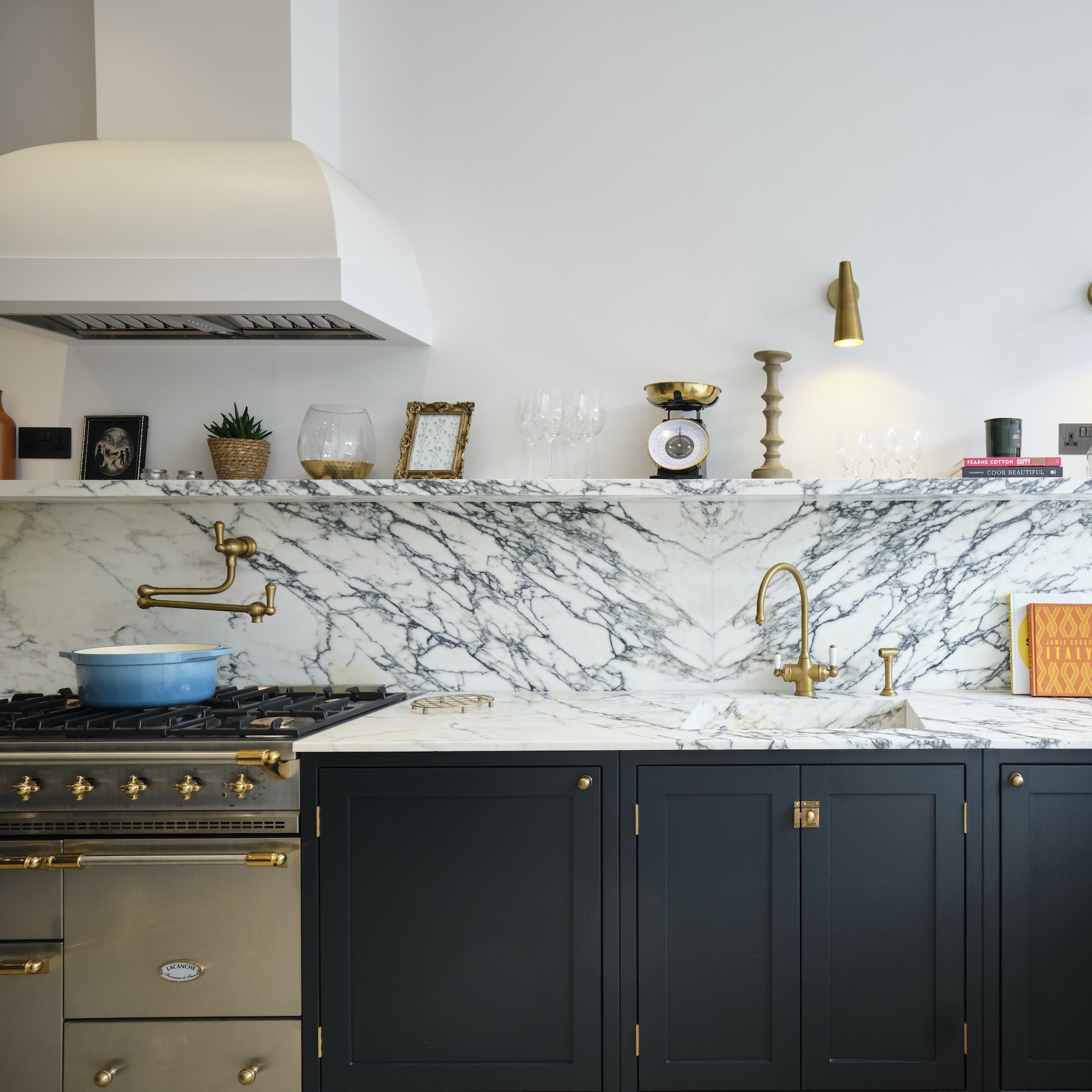
Whether you’re a time-starved chef, tea guzzler, or just someone who adores clutter-free countertops, boiling water taps are one kitchen innovation you won’t want to miss out on. Now you know exactly how they work, isn’t it time to ditch your kettle?







